Realme 8


The Realme 8 offers a competent smartphone package for anyone looking to spend less than £200. In skipping 5G, you get a vibrant FHD+ AMOLED display, a reasonably capable 64-megapixel camera, plus superior gaming performance over the Realme 8 5G. However, there are a few quirks and glitches here that may need addressing, while those hoping for genuine progress over the (at the time) impressive Realme 7 will be disappointed.
Pros
- Vibrant AMOLED display
- Decent gaming performance
- Excellent battery life
Cons
- Display only 60Hz
- Camera has focusing issues in low light
- Glitchy software
Availability
- UKRRP: £199
- USARRP: $
- EuropeRRP: €
- CanadaRRP: CA$
- AustraliaRRP: AU$
Key Features
- RAM6 or 8GB RAM helps with multitasking
- CameraFour cameras on the back and one on the front
- OLEDThe 60Hz display is bright and colourful
Introduction
In the Realme 8 5G and the Realme 8, anyone shopping for one of the brand’s latest budget phones faces an interesting proposition. With an identical price of £199/€199, do you choose next-gen network connectivity or a slightly more capable but 4G-only alternative?
We’ve already shared our thoughts on the Realme 8 5G side of this particular equation. Now it’s time to run the numbers on the ‘vanilla’ Realme 8, which also happens to be the direct follow-up to the Realme 7, one of the best cheap phones of 2020.
The key points of difference between the Realme 8 and the Realme 8 5G are a slightly faster CPU, a slower but more vibrant AMOLED display, a superior 64-megapixel main camera, and a slightly snazzier design.
But is that enough to remain competitive in a section of the market that includes the mighty Poco X3 NFC? Let’s find out.
Design and screen
- Thin and light, if slightly dull
- In-display fingerprint sensor can be hit and miss
- Vibrant AMOLED display
The main difference between the design of the Realme 8 and the Realme 8 5G lies in what the company calls its “Infinite Bold Design”. This essentially translates to slapping a “Dare To Leap” slogan down one side of the rear of the phone in big bold type, overlaid by a rainbow-hued finish.
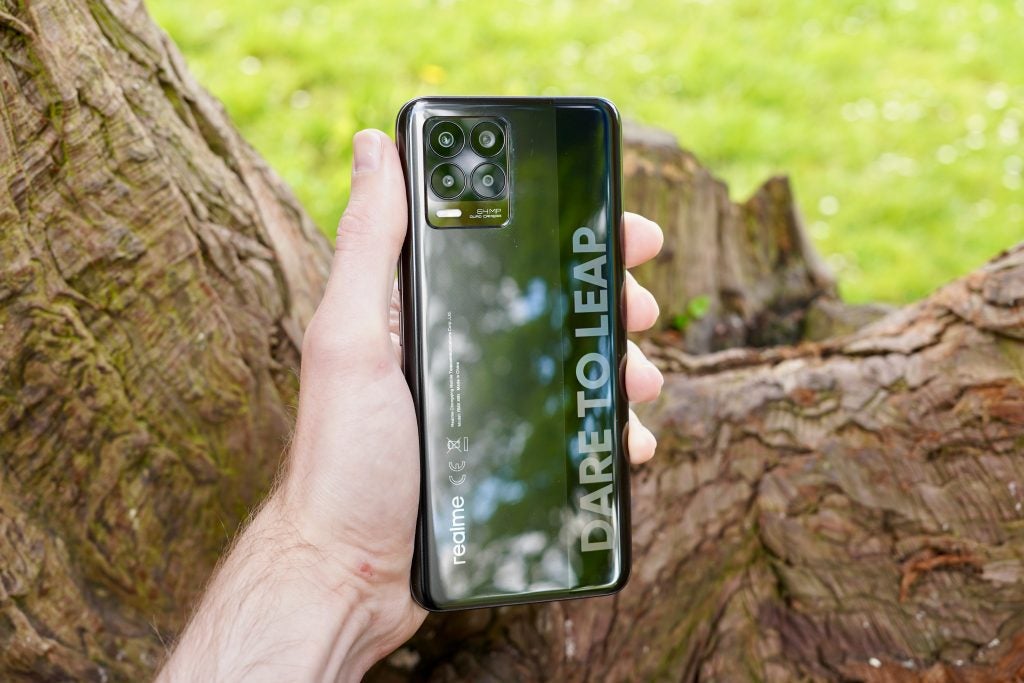
It’s a bold approach that’s shared by the Realme 8 Pro, and it proves similarly divisive.
Like that handset, the combination of a shouty logo with a plastic body results in a device that feels somewhat cheap and tacky. The Realme 8 comes in the more muted Cyber Black, which lends it a little more class over the dazzling Cyber Silver. Nevertheless, both models are highly reflective, and the black version in particular is very susceptible to fingerprint smudges.
Like the Realme 8 5G, the Realme 8 feels reassuringly solid. It’s actually quite a bit thinner (8mm vs 8.5mm) and lighter (177g vs 185g) than its 5G-equipped brother, but there’s a similarly reassuring lack of flex and creak.
The Realme 8 follows the Realme 8 Pro in opting for an in-display fingerprint sensor rather than the 5G’s side-mounted method. This would widely be seen as a more premium touch – but, as it was on the Realme 8 Pro, I actually found it to be a little temperamental. In fact, early on, I even wiped and re-enrolled my fingerprints after a whole series of failures.
The display itself marks another difference between the Realme 8 and its 5G sibling. It’s only a smidgen smaller at 6.4 inches rather than 6.5 inches, with a similar 1080 x 2400 (FHD+) resolution.
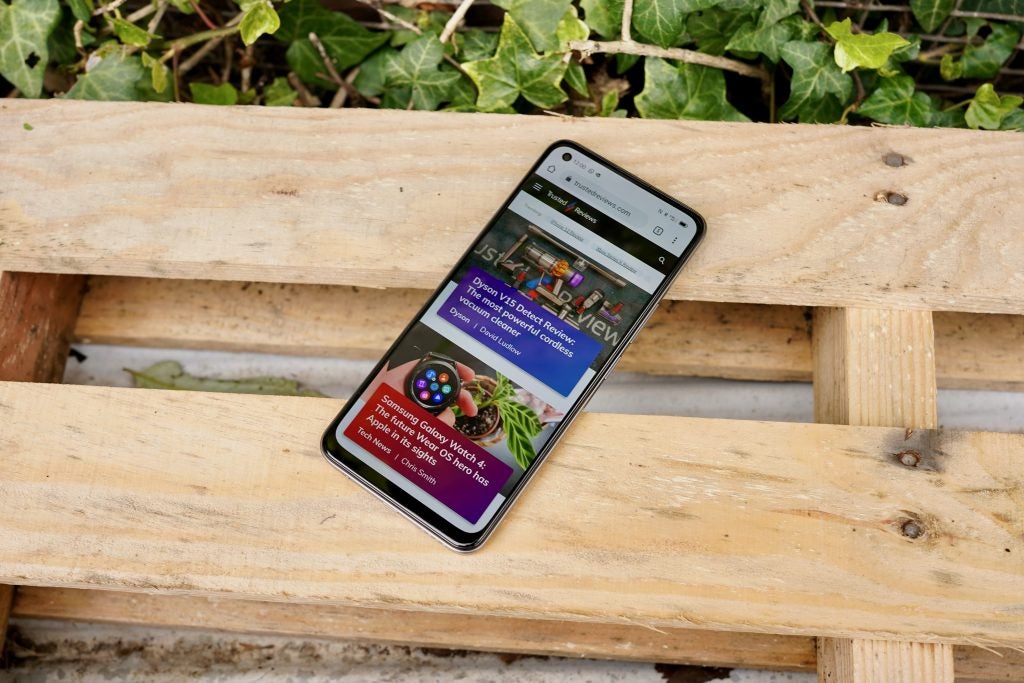
The big difference is that the Realme 8 opts for AMOLED rather than LCD panel technology. The result is a much more vibrant, HDR-friendly screen, and a higher peak brightness of 1000 nits. As budget phone displays go, it’s very pleasant to behold.
There are no pre-set vibrancy modes, just a simple slider to make the tone warmer or cooler. It’s far from the best OLED display, but it results in a more nuanced picture with better contrast than its brother.
Conversely, the Realme 8 display has no higher refresh rate option, unlike the 90Hz Realme 8 5G. Just like the Realme 8 Pro, you’ll have to make do with a bog standard 60Hz.
I have slightly mixed feelings about high refresh rate displays in budget phones, where there’s seldom the hardware in place to do a full 120Hz screen justice. Even the mighty Poco X3 NFC doesn’t manage a seamless 120Hz experience. Raising the refresh rate undeniably improves the general navigation experience overall, and it’s missed here, but it isn’t the essential provision that some would claim it to be.
On balance, I’d take the Realme 8’s 60Hz AMOLED over the Realme 8 5G’s 90Hz LCD. But if you value smooth scrolling above visual fidelity, the 5G is the way to go.
Camera
- Main sensor decent in good lighting
- Issues with the focussing
- Poor ultrawide
On the surface, the Realme 8’s camera system would appear to hold an advantage over the Realme 8 5G. It’s led by a more pixel-packed 64-megapixel wide sensor (the 5G’s is 48 megapixels), and unlike its well-connected brother, the Realme 8 features a dedicated ultrawide.
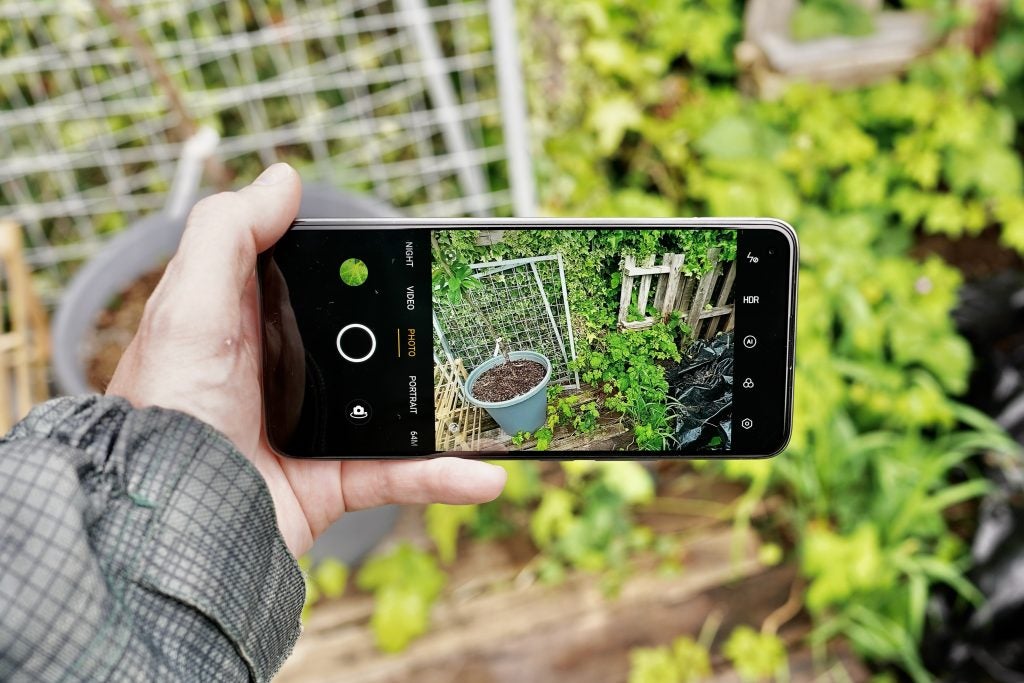
It isn’t quite as simple as that, however. In good lighting, the Realme 8 takes nice, vibrant albeit oversharpened shots. There isn’t a great deal in it, but I found images displayed deeper colours and superior contrast to those of the Realme 8 5G.
Those extra pixels also help with zoomed-in shots. In the absence of a dedicated telephoto, the Realme 8’s 2x shots pack more detail and definition than those of their brother. I wouldn’t bother with the 5x option, though; the lack of definition will make your eyes hurt.


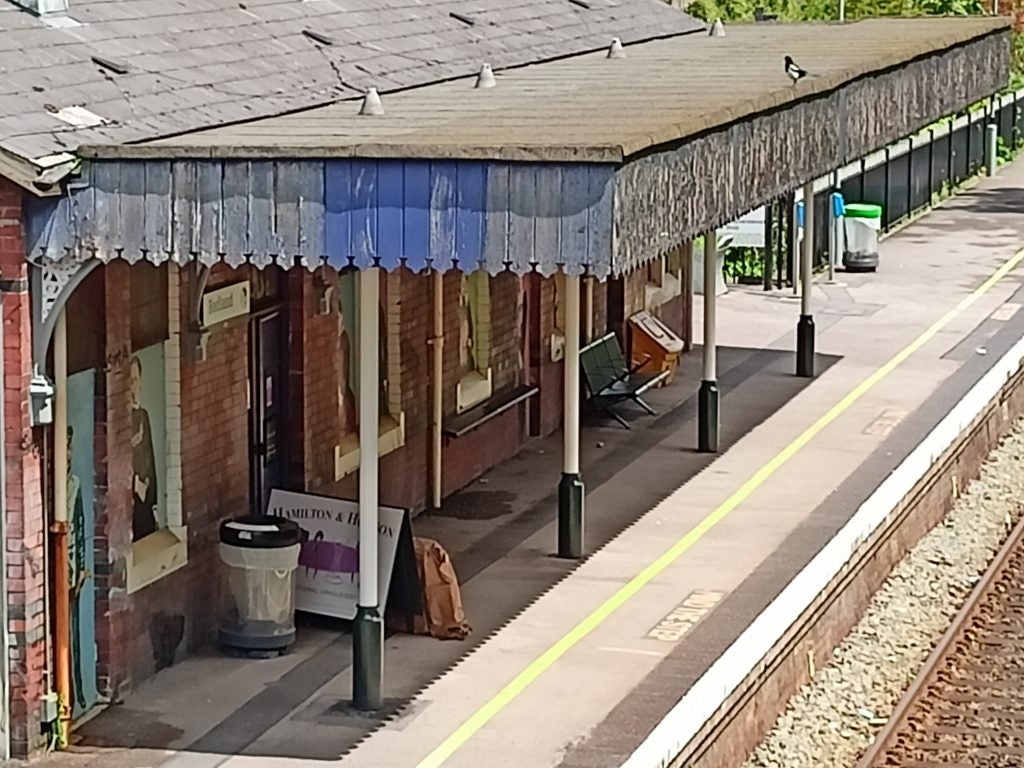
However, as soon as the light begins to drop, the Realme 8 camera seems to struggle. Taking shots indoors during the day, it would take an age to lock onto the subject – even once it did, the resulting shots were often blurry. Even on activating the Night mode in these conditions (which would typically be overkill), the results were murkier than their Realme 8 5G equivalents.
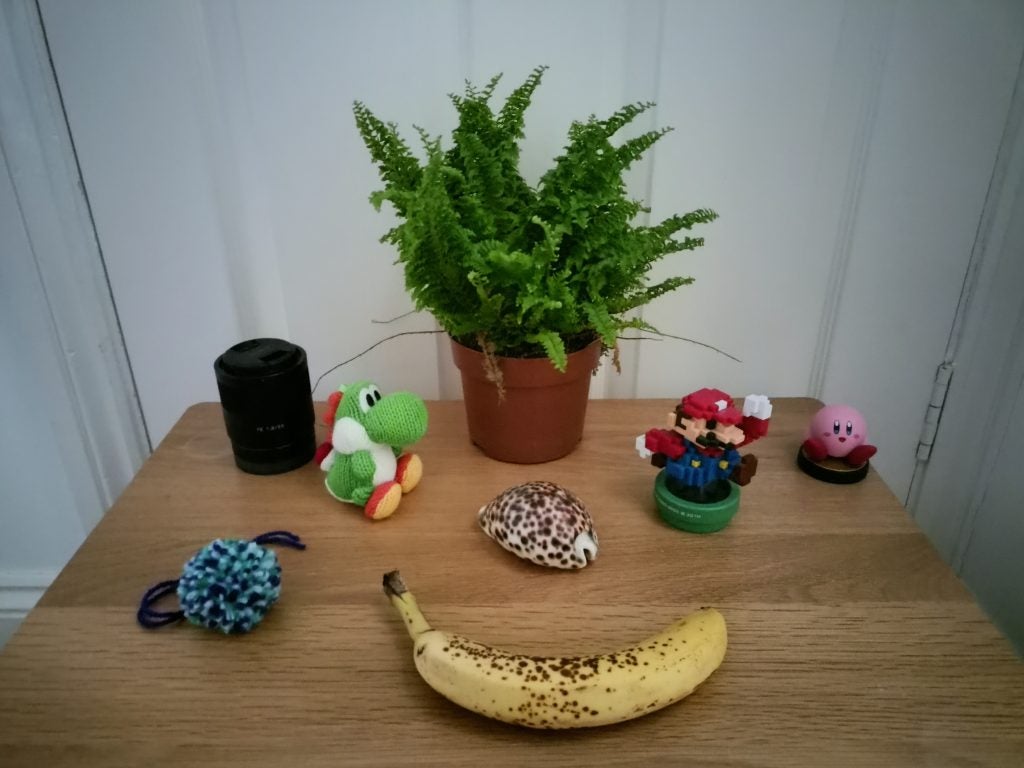
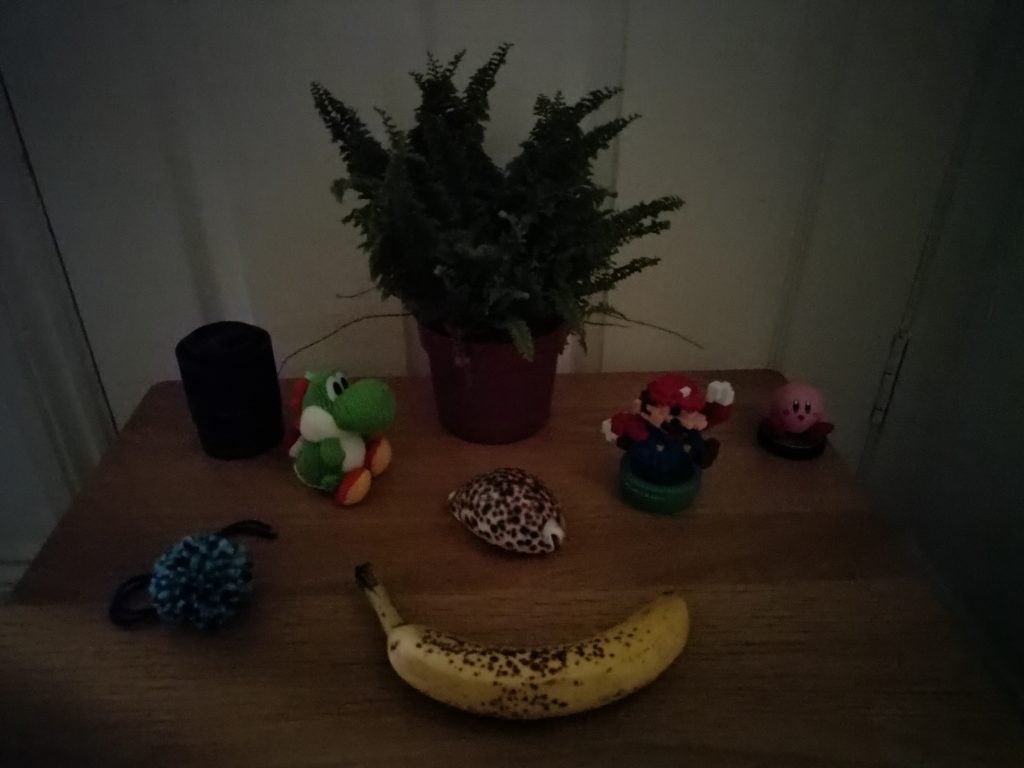
That followed through to genuine night-time conditions, where I sometimes found myself questioning whether the Realme 8’s Night mode was even engaged. Sure, the delayed shutter and extended processing was there in the moment, but the results didn’t appear particularly bright, even compared to the Realme 8 5G.
There’s something to be said for a more subtle Night mode that doesn’t bleach everything out – especially in a cheap phone. And the Realme 8’s approach means less noise than rivals such as the Oppo A54. But the Realme 8 doesn’t go quite as far as its sibling.
Better by day, worse by night, then. But as I’ve already mentioned, the Realme 8 has one more ace up its sleeve compared to its 5G brother – an 8-megapixel ultrawide sensor.
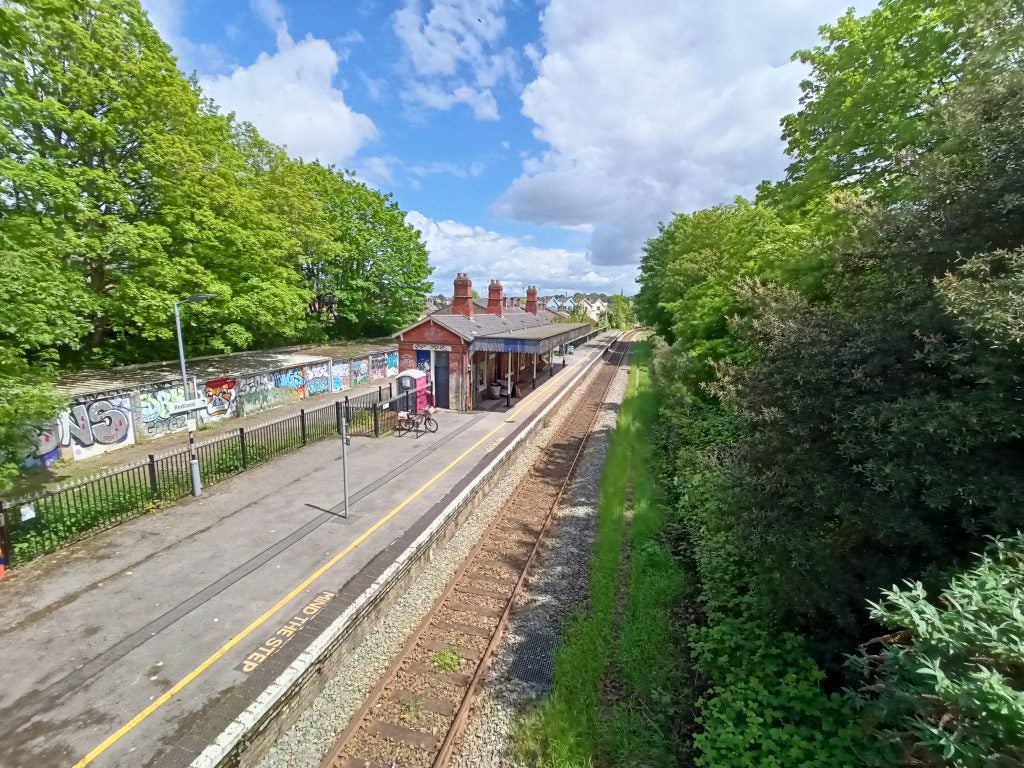
Its very inclusion has to be seen as an improvement over the Realme 8 5G, which provides no way to take those zoomed-out landscape shots. That said, they’re not very good quality, with a more washed-out palette than the main sensor and noticeable softness around the edges.
Photos taken using the 2-megapixel macro camera are exactly what we’ve come to expect from such a lens – fine in thumbnail form, but a blurry, noisy mess as soon as you transfer them to a larger screen.

Performance
- Mediocre overall performance, but strong for gaming
- Some issues with call quality
- Software can be glitchy
In our Realme 7 review last year, we spoke of its “average day-to-day performance”. I am a little disappointed to report that nothing has changed with the Realme 8, mainly down to its use of an identical MediaTek Helio G95 SoC.
This humble 12nm chip is sufficient for generally fluid performance. The lack of a 90Hz or 120Hz display helps cover for some of the stutters you’ll often experience in a rival budget phone, although you’ll observe the odd pause when opening apps.
Note, too, that while the handset I was sent employed 6GB of RAM, there are 4GB and 8GB models available. Opting for the lowest model, if it’s on offer in your region, could potentially impact the fluidity of app switching.
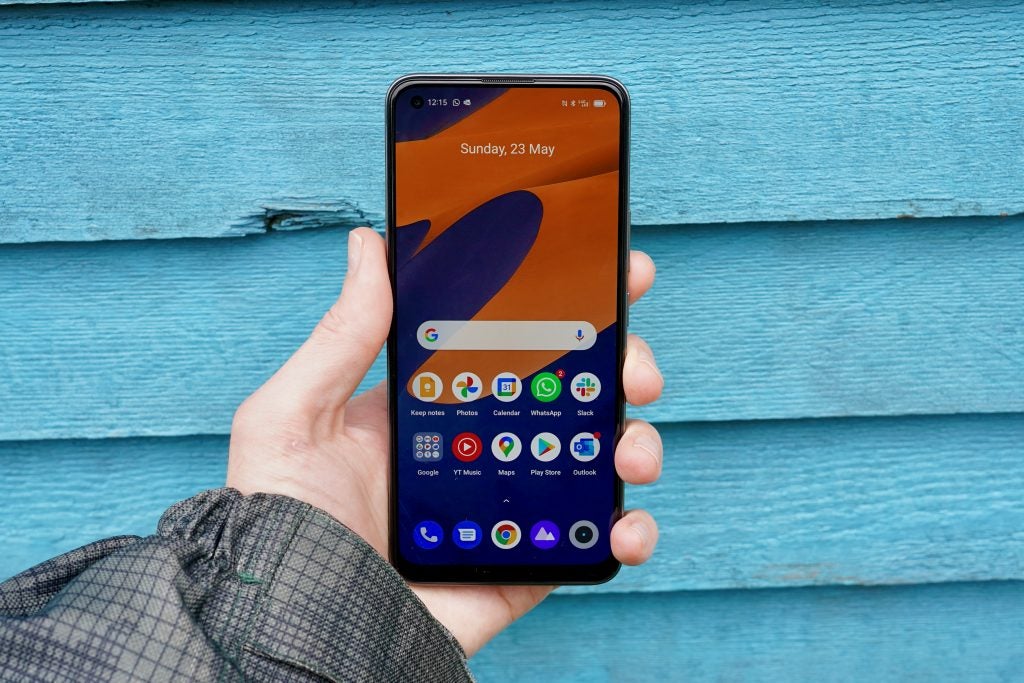
The inclusion of an advanced Copper Liquid Cooling System means that there have been some year-on-year performance gains over the Realme 7. This apparently boosts the chip’s cooling efficiency, enabling it to run faster for longer.
Make no mistake, though, this is a budget phone through and through. A Geekbench 5 multicore score of 1692 tells you as much. This result places it a smidgen behind the Realme 8 5G with its Dimensity 700 5G chip on 1749, as well as the Poco X3 NFC and its Snapdragon 732G on 1769.
Geekbench is a CPU-focused benchmark, of course. When it comes to the GPU, the Realme 8 burns past its 5G-focused brother. It managed a 3DMark Wildlife score of 1467 compared to the Realme 8 5G’s 1095, making it more comparable with the Poco X3 NFC in the graphical output stakes.
This is reflected when you boot up PUBG Mobile, where the graphical settings default to HD with a High frame rate. That’s the kind of setting you might expect to see in phones costing double the money – although you’re not able to crank things up any further. Performance is reasonably fluid, too, albeit not to the silkiest degree of the true flagships.
We only really mention call quality these days when there’s something negative to report – and, sadly, that’s the case here. During my week with the Realme 8, several calls were heavily broken up with an accompanying robotic tinge to the voice on the other end. The other party always claimed to be able to hear me just fine on these occasions, but quickly switching my SIM to another phone yielded perfectly clear results.
The phone runs on Android 11 and Realme UI 2.0, which is generally a pretty competent Android skin. It’s as smooth and uncluttered here as it is on the Realme 8 5G.
Call quality wasn’t the only glitch I experienced during my time with the Realme 8, though. There was a weird bug that seemed to refuse to recognise links to places in Google Maps, or to a poll widget in Facebook. I also encountered some disconcerting visual glitches when browsing web content through Google Feed, which is situated to the left of the main homescreen as it should be.
Such bugs and glitches are typically temporary, of course, and may not even be an issue for everyone. I’m simply reporting my experience.
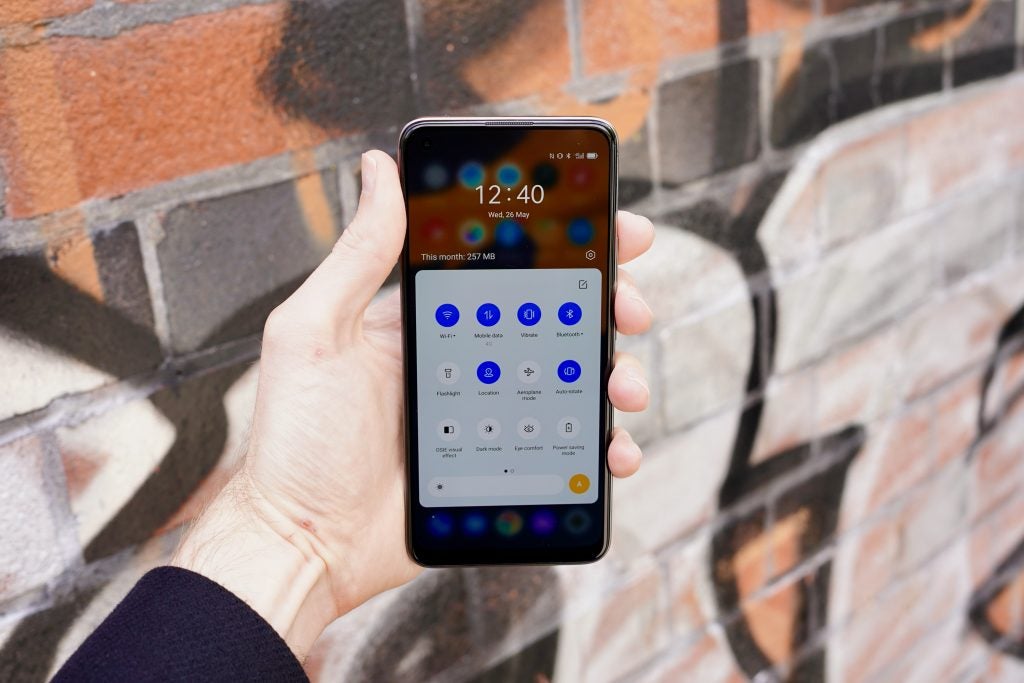
Otherwise, Realme UI 2.0 is a solid if slightly crude interface. Like most of its budget competitors from the likes of Xiaomi and Oppo, it defaults to a curiously retrograde homescreen set-up of virtual buttons and no always-on display. It’s good that you can change these basic functions, but why not lean into them from the off?
Another touch that grates is the way the phone emits a loud notification to indicate that it’s entered optimised night charging mode – often at the point I had begun nodding off. Thanks for the early alarm, Realme.
Just as there are touches that annoy, so there are a handful of small inclusions that struck me as thoughtful. Not every manufacturer bothers to include Google Keep in its suite of preinstalled apps, for example, but Realme does here.
The company has also refrained from going big on the bloatware here in the West – which wasn’t the case with the Asia-focused Realme 8 5G model I reviewed. There are homebrewed apps for videos, photos, music, and all the usual stock tools, but there’s no superfluous secondary web browser as is the case with many of its rivals.
On the (non-Google) third-party app front, meanwhile, all you have to deal with is the ubiquitous Facebook.
Battery life
- Big 5000mAh battery
- Good for two days of moderate use
- 30w charging is welcome
The Realme 8 comes packing a large 5000mAh battery, which is the same as the Realme 8 5G. Unlike that latter phone, of course, you don’t have to worry about occasional 5G connectivity or a high refresh rate display sucking any extra juice.
Sure enough, this phone is an absolute stamina champ. I found myself able to get to the end of a moderately busy day of around 5 hours’ screen-on time with around 50% left in the tank. One mammoth spell of two and a half days and 11 hours of screen-on time still left me with 30% to play with.
Light to moderate users will be able to clear two full days between charges without issue, which is the holy grail when it comes to smartphone battery life.
Heavier media consumption and gaming will hit the Realme 8 battery harder, but it stands up well nonetheless. After 30 minutes of PUBG Mobile, I found that my handset had lost 7% of its power. That’s about half the loss of pricier flagship phones – although, again, they have more powerful components and more demanding visual settings to deal with.
One hour of video streaming sapped 3% of the Realme 8’s battery, which is a very good result indeed. Curiously, the Realme 8 5G lost 8% in similar tests.
Recharging is another way in which the Realme 8 bloodies the nose of its 5G brother. It comes bundled with a 30W brick compared to the Realme 8 5G’s 18W. In my tests, this will see you from 0 to 50% in 26 minutes, and 0 to 100% in 67 minutes – which is pretty much as Realme states.
Content
Best Offers
Best Offer content
Should you buy it?
You want two-day battery life: The Realme 8 will see you through two full days, thanks to a large battery and power-sipping components.
You like clean, unassuming design: The Realme 8’s shouty slogan-based design isn’t for fans of subtly or understatement
Verdict
The Realme 8 is a perfectly capable addition to the £200 smartphone category, with an attractive AMOLED display, strong gaming performance, and stellar battery life. It’s not one of the best phones around though, even at the price.
It lacks the all-around game of the Poco X3 NFC; its slogan-heavy design is a touch wearisome, and our review model displayed some irritatingly glitchy behaviour. Generally speaking, it’s the better pick over the compromised Realme 8 5G, unless 5G is an absolute necessity. Even then, you can do better for the money.
FAQs
The screen here is 60Hz, rather than 90Hz
No, you’ll need the Realme 8 5G for that
The Realme 5G does not have an IP rating
Test comparison title
Full specification title
The post Realme 8 appeared first on Trusted Reviews.
Source Trusted Reviews ,Home Appliances Reviews

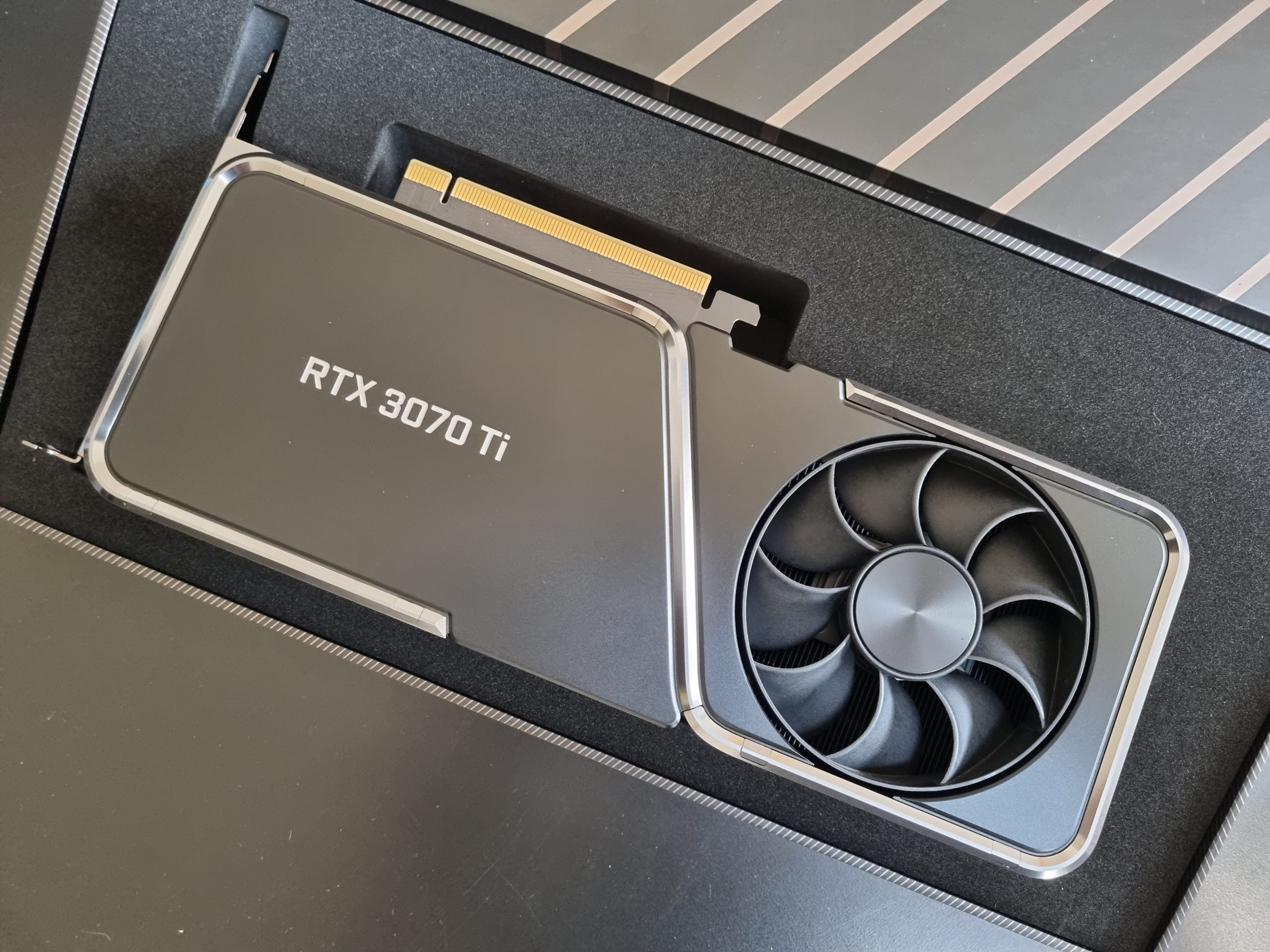
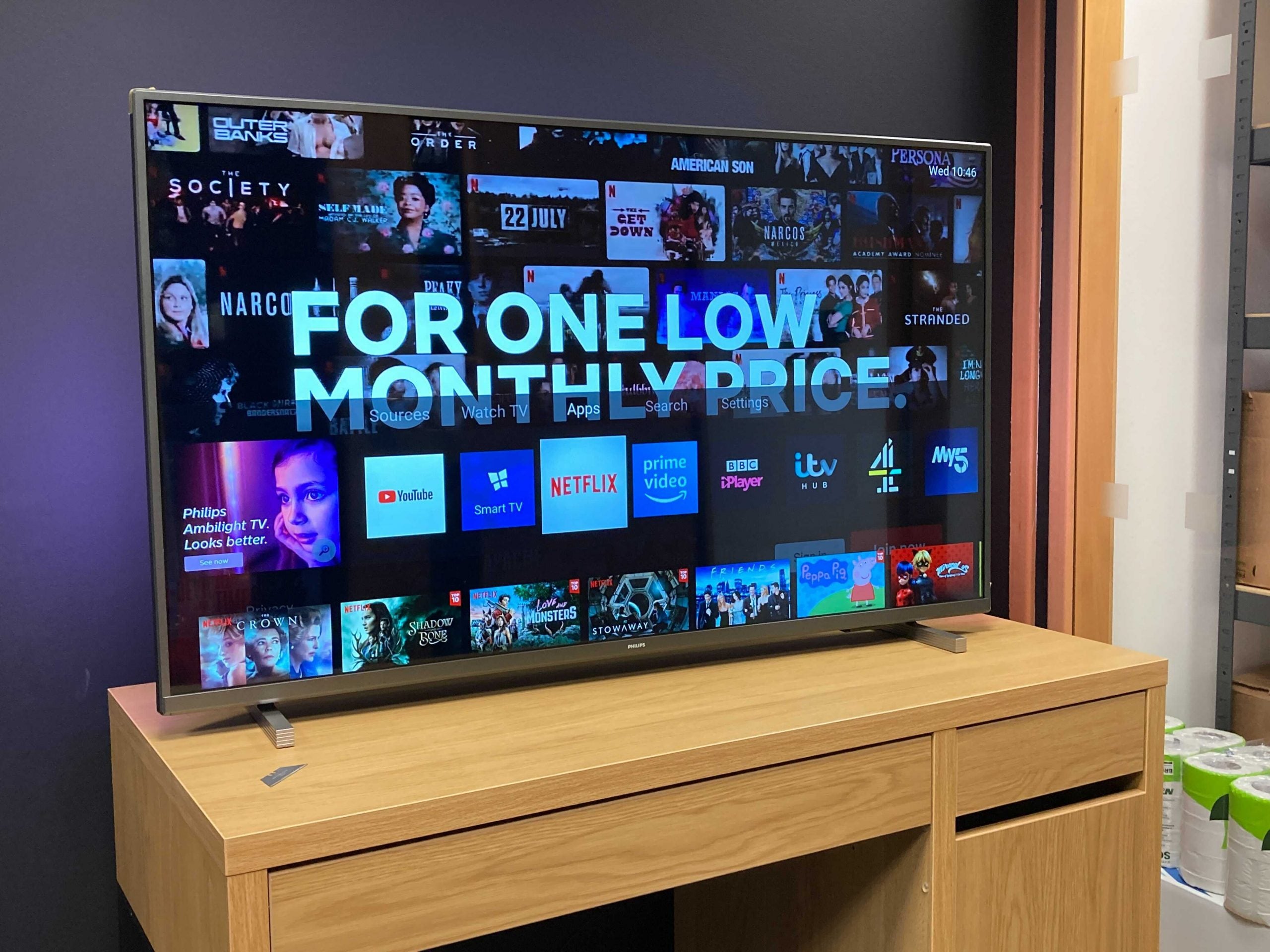
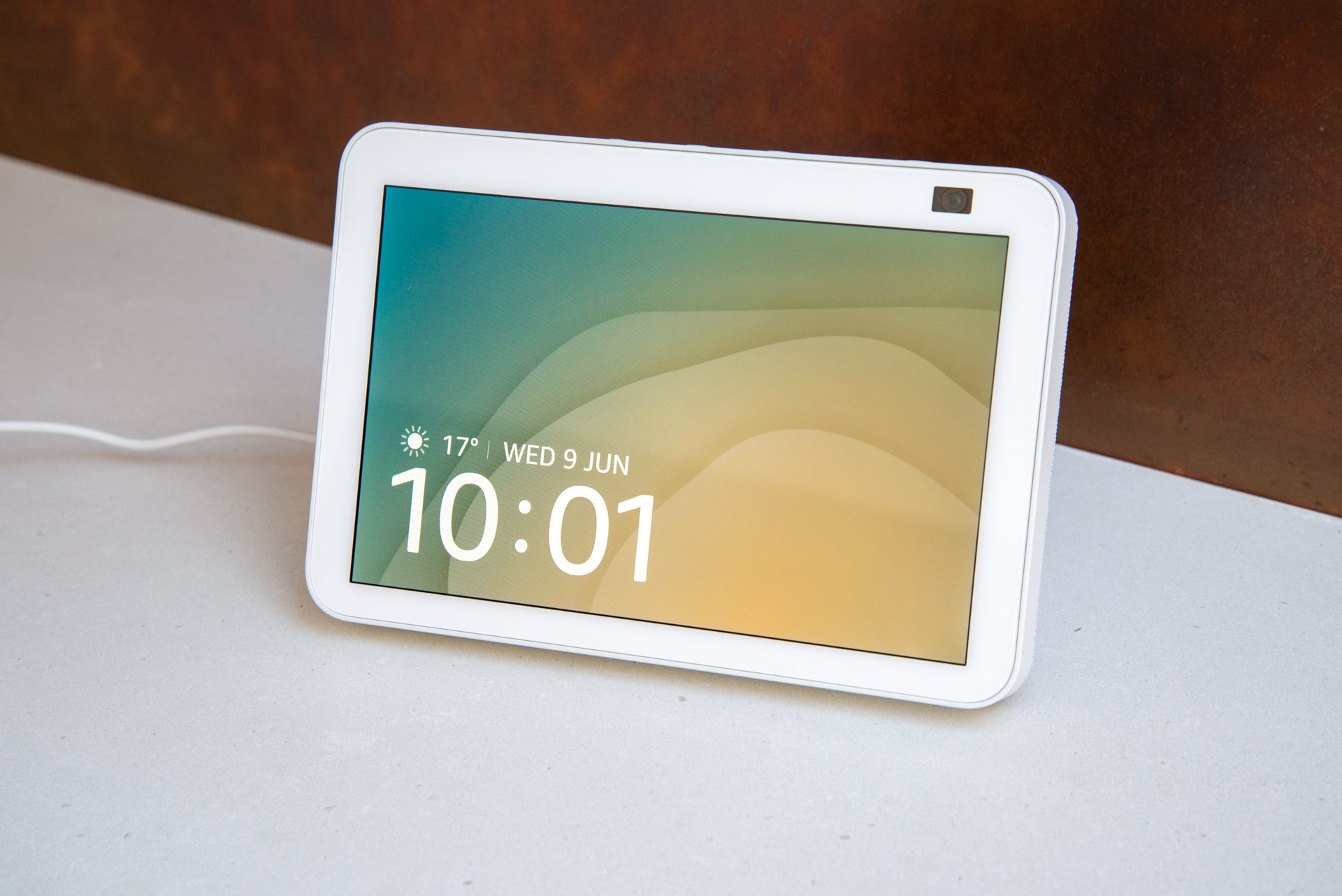
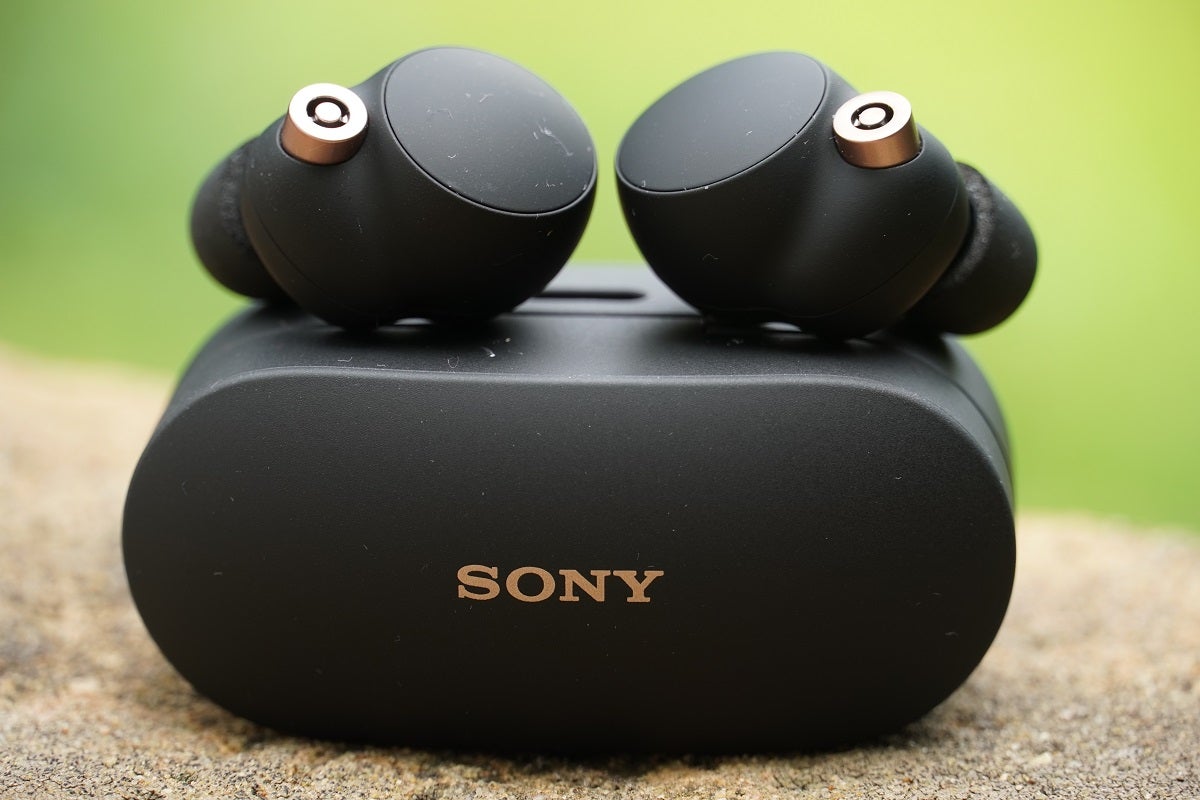

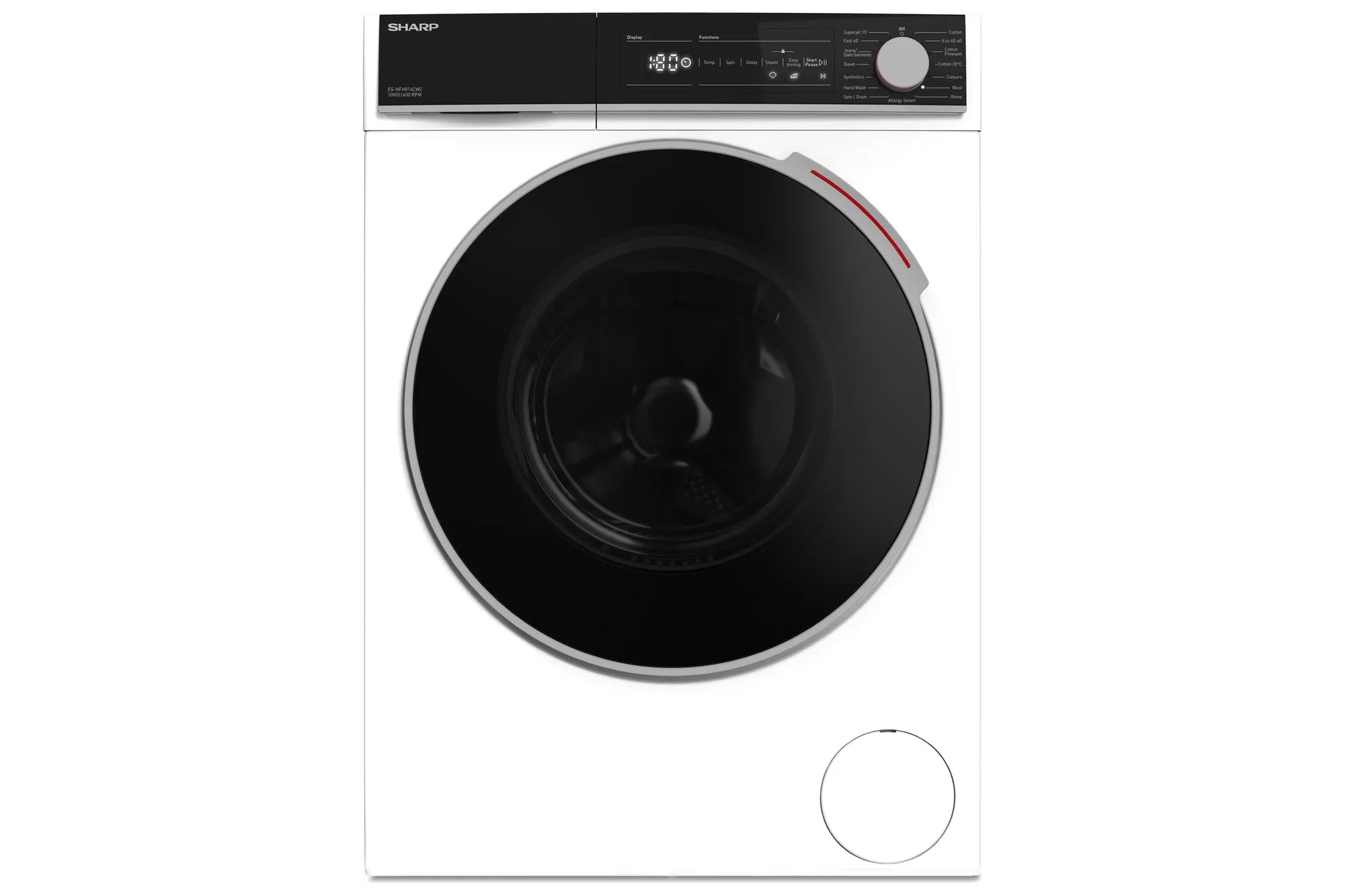
No comments